Part – 1: Introduction & Overview
Chapter 1—Introduction to Textile Sector
1.1 Introduction ……………………………………………………………………………………….3
1.2 Segments in the textile industry………………………………………………………….7
1.3 Major processes involved in the textile industry…………………………………8
1.3.1 Fibres ……………………………………………………………………………………9
1.3.2 Spinning……………………………………………………………………………..10
1.3.3 Weaving ……………………………………………………………………………..10
1.3.4 Knitting……………………………………………………………………………….11
1.3.5 Pre-treatment………………………………………………………………………11
1.3.6 Dyeing ………………………………………………………………………………..12
1.3.7 Finishing treatments……………………………………………………………13
1.3.8 History of taxation in the textile sector ……………………………….14
1.3.9 Central taxes ……………………………………………………………………….14
1.3.10 State taxes……………………………………………………………………………15
1.4 Levy of GST ……………………………………………………………………………………..17
1.5 Market dynamics of the textile sector ……………………………………………….27
1.6 Digital India & ONDC………………………………………………………………………28
1.7 Conclusion………………………………………………………………………………………..30
Part – 2: Impact & Analysis on Relevant Sectors
Chapter 2—Impact on Manufacturers and Traders
2.1 Introduction ……………………………………………………………………………………..39
2.2 Tax impact erstwhile laws vs GST …………………………………………………….39
2.3 Various links in supply chain ……………………………………………………………41
2.3.1 Natural raw material supplier…………………………………………….41
2.3.2 Man-made raw material supplier ……………………………………….42
2.3.3 Manufacturers …………………………………………………………………….42
2.3.4 Super stockist ……………………………………………………………………..44
2.3.5 Distributor/wholesale trader……………………………………………….45
2.3.6 Retail trader selling off the counter……………………………………..46
2.3.7 E-commerce retail trader…………………………………………………….46
2.4 Impact of GST on various transactions undertaken by a business …….47
2.4.1 Inward supplies of goods and/or services …………………………..47
2.4.2 Storage of goods………………………………………………………………….54
2.4.3 Outward supply of goods and/or services…………………………..55
Chapter 3—Impact on Service Providers
3.1 Introduction ……………………………………………………………………………………..62
3.2 Support services in textile industry…………………………………………………..62
3.2.1 Advertisement services……………………………………………………….63
3.2.2 Exhibition services………………………………………………………………64
3.2.3 Event management services………………………………………………..64
3.2.4 Shelf space rental ………………………………………………………………..64
3.2.5 Franchise services ……………………………………………………………….65
3.2.6 Storage and warehousing……………………………………………………66
3.2.7 Legal services ……………………………………………………………………..70
3.2.8 Accounting, auditing and tax consultancy ………………………….71
3.2.9 Management consulting services ………………………………………..71
3.2.10 Transaction processing and IT support services………………….72
3.2.11 Manpower supply services …………………………………………………72
3.2.12 Repair and maintenance……………………………………………………..72
3.2.13 Construction and works contract services …………………………..74
3.2.14 Canteen services …………………………………………………………………75
3.2.15 Renting and leasing services……………………………………………….76
3.2.16 Cleaning and sanitation services…………………………………………77
3.2.17 Security services………………………………………………………………….77
3.2.18 Sponsorship services …………………………………………………………..78
3.2.19 Take-over or sale of business ………………………………………………79
3.2.20 Research and development services ……………………………………79
3.2.21 Designing services ………………………………………………………………79
3.2.22 Testing certification and inspection services ……………………….80
3.2.23 Washing, cleaning and dyeing services……………………………….82
3.2.24 Discussion on intermediary ………………………………………………..82
3.2.24.1 Meaning of Intermediary……………………………………….83
3.2.24.2 Explanation of the term ‘Intermediary’………………..83
3.2.24.3 Intermediary and the textile industry ………………….85
3.2.24.4 Tax rates for Intermediary services ………………………86
3.2.25 E-Commerce ……………………………………………………………………….87
3.3 Relevant decisions…………………………………………………………………………….92
3.4 Conclusion………………………………………………………………………………………..93
Chapter 4—Impact on Job Workers
4.1 Introduction ……………………………………………………………………………………..94
4.2 Concept of job work under GST………………………………………………………..95
4.2.1 Meaning of processing in the context of job work……………….95
4.3 Job work models……………………………………………………………………………….96
4.4 Taxability of job work services ………………………………………………………….98
4.4.1 Taxability of job work………………………………………………………….98
4.4.2 Goods sent for job work………………………………………………………98
4.4.3 Job work charges…………………………………………………………………99
4.5 Rates of tax ……………………………………………………………………………………….99
4.6 Job work on principal to principal basis………………………………………….100
4.7 Other relevant aspects …………………………………………………………………….101
4.8 Job work procedure ………………………………………………………………………..102
4.9 Availability of ITC…………………………………………………………………………..104
4.10 Movement of goods ………………………………………………………………………..104
4.11 Issuance of invoice, time of supply and value of supply …………………106
4.12 Important issues ……………………………………………………………………………..108
4.12.1 Testing – whether a job work?……………………………………………108
4.12.2 Printing/dyeing processes done on materials (fabric)
sent by registered principal- whether it is job work?…………108
4.12.3 Contract of manufacture and supply of garment given to
the contractor fully & the materials and manpower are
to be procured by contractor, will it be a job work or not? ..108
4.12.4 Contact given to the sub-contractor only for labour. Denim
and other materials resulting in jeans to be supplied by
registered person for the job. Whether sub-contractor
is said to be doing a job work?…………………………………………..109
4.12.5 Contact given to the contractor only for labour. Denim
and other materials resulting in jeans to be supplied by an
unregistered person for the job. Will the contractor be
said to be doing job work under GST? ………………………………109
4.12.6 When a job worker is providing services to the customer
located outside India, whether such services are covered
as job work under GST?…………………………………………………….109
4.12.7 Whether it is compulsory to opt for job work model by
principal sending materials for processing to job
worker?……………………………………………………………………………..109
4.12.8 When goods are sent to job worker and same has been
lost/destroyed prior to receipt at job worker’s premises,
what are the GST implications?…………………………………………110
4.12.9 Is there any requirement of keeping the records regarding
the conversion of inputs to outputs in respect of materials
sent for job work? ……………………………………………………………..110
4.12.10 Where the registration of a job worker is in a different State
as compared to the principal and the goods are intended
to be cleared directly from the premises of the job worker
for sale, then how should the transaction be structured? ……110
4.12.11 Whether job workers are eligible for a refund of unutilized
input tax credit due to an inverted duty structure under
section 54(3) of the CGST Act, even if the supplied fabrics
are covered under Notification No. 5/2017- CTR ………………..110
4.12.12 Waste and scrap arising the course of job work ………………….111
4.13 Relevant decisions…………………………………………………………………………..111
4.14 Conclusion………………………………………………………………………………………111
Chapter 5—Other Removals
5.1 Introduction ……………………………………………………………………………………113
5.2 Agency …………………………………………………………………………………………..113
5.2.1 Definition of agent…………………………………………………………….113
5.2.2 Concept of agent and principal …………………………………………114
5.2.3 Agent and GST………………………………………………………………….115
5.2.4 How to determine whether a person is acting as an agent
of the other person?…………………………………………………………..115
5.2.5 GST implications for an agent …………………………………………..116
5.3 Sample…………………………………………………………………………………………….117
5.3.1 Sample and Textile Industry ……………………………………………..117
5.3.2 Valuation in case of samples ……………………………………………..118
5.3.3 Blockage of credit on goods given out as free samples………119
5.3.4 Whether the sample can be a business asset?…………………….119
5.3.5 Samples are free? ………………………………………………………………120
5.4 Exhibition ……………………………………………………………………………………….120
5.4.1 Registration as a casual taxable person -supplier
participates in an exhibition in another State? …………………..121
5.5 Free items ……………………………………………………………………………………….122
5.5.1 Same item as the main product …………………………………………122
5.5.2 Different free items which are naturally bundled with
the main product ………………………………………………………………122
5.5.3 Different free items that are not naturally bundled with
the main product ………………………………………………………………122
5.6 Gift………………………………………………………………………………………………….123
5.6.1 Gifts given to employees …………………………………………………..124
5.6.2 Gift given to customers……………………………………………………..124
5.6.3 Gift given to relatives ………………………………………………………..125
5.7 Franchise models…………………………………………………………………………….125
5.7.1 Holding of stock on sale or approval basis………………………..126
5.7.2 Purchase and sale model …………………………………………………..126
5.7.3 Agency model …………………………………………………………………..126
5.7.3.1 When goods supplied in the name of the
franchisor……………………………………………………………..126
5.7.3.2 When goods supplied in the name of the
franchisee………………………………………………………………127
5.8 Shelf space rental…………………………………………………………………………….127
5.9 Captive use……………………………………………………………………………………..127
5.10 Display products …………………………………………………………………………….128
5.10.1 Display product ………………………………………………………………..128
5.10.2 Display products – Saleable ………………………………………………129
5.11 Design and development ………………………………………………………………..129
5.12 Donation …………………………………………………………………………………………130
5.12.1 Donation was given in kind………………………………………………131
5.13 Transfer/disposal of fixed assets ……………………………………………………..131
5.13.1 Transfer/disposal with consideration………………………………..131
5.13.1.1 Case I – Where input tax credit had not been
taken ……………………………………………………………………132
5.13.1.2 Case II – Where input tax credit had been taken ….132
5.13.2 Transfer/disposal without consideration…………………………..132
5.13.2.1 Case I – Where input tax credit had not been
taken …………………………………………………………………..132
5.13.2.2 Case II – Where input tax credit had been taken …133
5.14 Scrap sale of goods for a lower price……………………………………………….133
5.14.1 Taxability of scrap sales …………………………………………………….133
5.14.2 Valuation of scrap sales……………………………………………………..133
5.14.3 Availability of input tax credit attributable to scrap ………….134
5.15 Replacement of capital goods under warranty………………………………..134
5.16 Transfer of business on a going concern basis…………………………………135
5.16.1 Types of corporate actions…………………………………………………135
5.16.2 Taxability of transfer of business……………………………………….135
5.16.2.1 Definition of goods………………………………………………135
5.16.2.2 Definition of services……………………………………………136
5.16.2.3 Meaning of going concern……………………………………136
5.16.2.4 Transfer of input tax credit…………………………………..137
5.16.2.5 Procedure for various corporate actions ………………137
Part – 3: Conceptual & Operational Laws
Chapter 6—Classification and Exemption
6.1 Background…………………………………………………………………………………….143
6.2 Importance of classification …………………………………………………………….145
6.3 GST rate schedule for goods……………………………………………………………146
6.4 Procedure of classification ………………………………………………………………147
6.4.1 Determination of type of supply ……………………………………….149
6.4.1.1 Composite supply………………………………………………….149
6.4.1.2 Bundled services …………………………………………………..149
6.4.1.3 Mixed Supply………………………………………………………..151
6.4.1.4 Non-composite supply ………………………………………….152
6.4.2 Classification of goods ………………………………………………………152
6.5 Services classification………………………………………………………………………161
6.6 Impact of wrong classification…………………………………………………………163
6.7 Exemptions under GST …………………………………………………………………..163
6.7.1 Power to grant exemption from tax…………………………………..163
6.7.2 Mandatory availment of exemption ………………………………….164
6.7.3 Exemption by special order on a case-to-case basis …………..164
6.7.4 Powers to insert explanation after issue of notification or
special order……………………………………………………………………..164
6.7.5 Procedure to avail exemption. …………………………………………..165
6.7.6 Specific exemptions for the textile sector…………………………..165
6.7.7 Effective date of notification ……………………………………………..167
6.7.8 Exemption notifications issued under CGST/IGST
whether apply to SGST/UTGST and vice-versa…………………167
6.7.8.1 Rates for Goods……………………………………………………..167
6.7.8.2 Rates for Services …………………………………………………..168
6.7.8.3 Rates under Composition………………………………………168
6.8 Practical caution in classification/exemptions …………………………………169
6.9 Relevant judicial decisions………………………………………………………………170
6.9.1 Principles evolved by courts ……………………………………………..170
6.9.2 Trade parlance…………………………………………………………………..171
6.9.3 Function or use………………………………………………………………….174
6.9.4 Expert opinion…………………………………………………………………..176
6.9.5 Dictionary meaning…………………………………………………………..177
6.9.6 ISI specification provided by Bureau of Indian Standards…178
6.9.7 Scientific interpretation……………………………………………………..178
6.9.8 Specific entry excludes a general entry ……………………………..178
6.9.9 Long standing classification not to be changed …………………179
6.9.10 Burden of proof…………………………………………………………………179
6.9.11 Other non-statutory principles ………………………………………….180
6.10 HSN codes and GST rates for textile products ………………………………..181
6.11 Classification and tax rates as applicable to textile related services…212
Chapter 7—Input Tax Credit
7.1 Eligibility and conditions for availing input tax credit…………………….215
7.1.1 Eligibility for claiming credit…………………………………………….215
7.1.2 Conditions for claiming input tax credit……………………………216
7.1.3 Input tax credit could be availed only if the details of
the invoice issued by the vendor is furnished by him in
his GSTR-1 and is appearing in GSTR-2B………………………….219
7.1.4 Other aspects relating to claim of input tax credit……………..221
7.1.5 Documentary requirements for claiming input tax credit
[Rule 36] ……………………………………………………………………………225
7.1.6 Time-limit for taking input tax credit [Section 16(4)]…………227
7.1.7 New time-limit for claiming input tax credit from F.Y.
2017-18 to F.Y.2020-21 ……………………………………………………….229
7.1.8 Time-Limit for Claiming Input Tax Credit in case of
cancellation of registration is revoked……………………………….229
7.1.9 Manner of utilizing input tax credit…………………………………..231
7.1.10 Blocking the utilization of credit available in electronic
credit ledger………………………………………………………………………231
7.1.11 Restriction in paying output tax liability fully by input
tax credit……………………………………………………………………………232
7.2 Apportionment & reversal of input tax credit [Section 17 read
with rules 42 & 43] ………………………………………………………………………….233
7.2.1 Restriction on credit for non-business purposes
[Section 17(1)]……………………………………………………………………234
7.2.2 Restriction on credit for exempt supplies [Section 17(2)]…..234
7.2.3 Value of exempt supply [Section 17(3)]……………………………..234
7.2.4 Manner of determination of eligible input tax credit in
respect of inputs or input services and reversal thereof
[Rule 42] ……………………………………………………………………………235
7.2.5 Manner of determination of input tax credit in respect
of capital goods and reversal thereof [Rule 43]………………….236
7.3 Blocked credits [Section 17(5)]…………………………………………………………236
7.4 Availability of credit in special circumstances [Section 18] ……………..241
7.4.1 List of various special circumstances and credit eligibility
[Section 18(1)]……………………………………………………………………241
7.4.2 Restriction on input tax credit for invoices older than
1 year [Section 18(2)] …………………………………………………………242
7.5 Manner of claiming credit [Rule 40]………………………………………………..242
7.5.1 The eligible individual/entity has the option to avail
input tax credit on the inputs that are currently in inventory,
or inputs incorporated within partially processed or
finalized products held within inventory, along with the
credit that was previously claimed on capital goods,
subject to the following conditions – Reduction of input
tax credit on capital goods by 5% points per quarter…………242
7.5.2 Filing of declaration in FORM GST ITC-01………………………..242
7.5.3 Declaration to contain specified details……………………………..242
7.5.4 Certification of Declaration……………………………………………….243
7.5.5 Verification of input tax credit claimed……………………………..243
7.6 Transfer of input tax credit in case of change in the constitution
of business [Section 18(3) read with Rule 41]…………………………………..243
7.6.1 Manner of transfer of credit on sale, merger,
amalgamation, lease, or transfer of a business (Rule 41)……244
7.7 Transfer of credit on obtaining separate registration for multiple
places of business [Section 25(2) read with Rule 41a]………………………245
7.8 Payment of input tax credit in case regular taxpayer switching to
composition scheme or supplies become wholly exempt
[Section 18(4) r/w Rule 44] ………………………………………………………………245
7.8.1 Manner of reversal of credit where regular taxpayer
opts for composition scheme or supplies become wholly
exempt (Rule 44)……………………………………………………………….246
7.9 Payment of input tax credit on supply of capital goods
[Section 18(6)]………………………………………………………………………………….247
7.9.1 Manner of claiming credit in special circumstances
[Rule 40] ……………………………………………………………………………248
7.9.2 Manner of reversal of credit under special circumstances
[Rule 44] ……………………………………………………………………………248
7.9.3 Tax on transaction value on supply of capital goods
as scrap……………………………………………………………………………..249
7.10 Input tax credit in respect of inputs and capital goods sent for job
work [Section 19 r/w Section 143 and Rule 45]………………………………..249
7.10.1 Conditions and restrictions in respect of inputs and
capital goods sent to the job worker [Rule 45] …………………..250
7.11 Manner of distribution of credit by input service distributor (ISD)
[Section 20 r/w Rule 39]…………………………………………………………………..252
7.11.1 Conditions ………………………………………………………………………..253
7.11.2 Procedure for distribution of input tax credit by Input
Service Distributor…………………………………………………………….254
7.11.3 Manner of recovery of credit distributed in excess
[Section 21]………………………………………………………………………..258
7.12 Inverted duty structure vis-à-vis ITC lapse……………………………………..258
7.13 Reversal as per Rule 42 of the CGST Rules, 2017 …………………………….259
7.14 Reversal as per Rule 43 of the CGST Rules, 2017 …………………………….263
7.14.1 Steps For Reversal of Credit Under Rule 43 ………………………267
7.15 Issues on Input Tax Credit (ITC)……………………………………………………..270
7.16 Conclusion………………………………………………………………………………………276
Chapter 8—Valuation
8.1 Introduction ……………………………………………………………………………………277
8.2 Consideration………………………………………………………………………………….279
8.2.1 Advance vs Deposit…………………………………………………………..280
8.2.2 Payments not in the nature of “Consideration”…………………282
8.2.3 Understanding value…………………………………………………………283
8.2.4 Sole consideration……………………………………………………………..284
8.2.5 Unrelated persons……………………………………………………………..288
8.2.6 Adjustment to transaction value ……………………………………….289
8.2.7 Valuation in case of free supplies (Gifts)……………………………292
8.2.8 Valuation in case of Post sale Discount/Quantity discount..292
8.2.9 Interest on the retrospective escalation of price ………………..293
8.2.10 Valuation in case of Ocean freight……………………………………..293
8.3 Possible area of the Disputes under GST…………………………………………295
8.3.1 Grossing up of TDS in case of foreign payments……………….295
8.3.2 Deduction of Pure agent v. Inclusion in the value of
supply……………………………………………………………………………….295
8.3.3 Rules u/s. 15(4) v. Notified supplies u/s.15(5)…………………….296
8.4 Valuation rules [Rules 27- 35 of CGST Rules]………………………………….296
8.4.1 Non-monetary consideration – Adjusted transaction value
[Rule 27] ……………………………………………………………………………297
8.4.2 Valuation of supply to distinct person (branches/division
with a separate registration under GST) or related person
[Rule 28] ……………………………………………………………………………298
8.4.3 Whether it is mandatory to determine the value of the
supplies made to distinct persons or related persons by
following the sequence given?…………………………………………..301
8.4.4 Pure agent reimbursements [Rule 33] ……………………………….302
8.4.5 Valuation of supply of goods through an agent [Rule 29]….303
8.4.6 Exports and imports of goods and services……………………….303
8.4.7 Cum tax supplies ………………………………………………………………304
8.4.8 Specific valuation methods – Optional [Rule 32]………………..304
8.5 Discounts ………………………………………………………………………………………..306
8.5.1 Distinction between discount by supplier and incentive
by the recipient………………………………………………………………….306
8.5.2 Treatment of ITC on receipt of financial/commercial
credit note by trader………………………………………………………….307
8.5.3 Type of discounts and incentives received by a trader………309
8.5.3.1 Discount vs Incentives …………………………………………..309
8.5.3.2 In bill discount ………………………………………………………309
8.5.3.3 Cash Discount ……………………………………………………….310
8.5.3.4 Quantity or turnover discount……………………………….310
8.5.3.5 Special or promotional discount ……………………………311
8.5.3.6 Price Difference Discount………………………………………312
8.5.3.7 However, when aforesaid price drop subsidies
are given a view can validly be taken that it need
not be taxed by citing withdrawal of Circular No.
105/24/2019-GST, dated 28.6.2019 by circular vide
Circular No. 112/31/2019–GST, dated 3rd October,
2019 In kind discounts ………………………………………….312
8.5.3.8 Buy one get one free offer………………………………………313
8.5.3.9 Free stock ………………………………………………………………313
8.5.3.10 Nominal value supplies……………………………………….313
8.5.4 Overstatement/understatement of value adopted……………..314
8.6 Interest/penal charges on delayed receipt of consideration……………..314
8.7 Alternative view for business asset …………………………………………………316
8.8 Issues and solution………………………………………………………………………….317
8.9 Conclusion………………………………………………………………………………………318
Chapter 9—Place of Supply
9.1 Introduction ……………………………………………………………………………………319
9.2 Significance of place of supply………………………………………………………..319
9.3 Nature of supply …………………………………………………………………………….320
9.3.1 Inter-State supply and intra-State supply………………………….320
9.3.1.1 Inter-State supply ………………………………………………….320
9.3.1.2 Import of goods or import of services ……………………321
9.3.1.3 Supplier in India and place of supply outside
India………………………………………………………………………323
9.3.1.4 Supplies to/by Special Economic Zone developer
or unit……………………………………………………………………325
9.3.1.5 Supply made to a foreign tourist……………………………325
9.3.2 Intra-State supply ……………………………………………………………..326
9.4 Location of supplier………………………………………………………………………..326
9.4.1 Location of supplier of goods ……………………………………………326
9.4.2 Location of supplier of services…………………………………………327
9.5 Location of recipient ……………………………………………………………………….329
9.6 Place of supply………………………………………………………………………………..331
9.6.1 In case of goods…………………………………………………………………331
9.6.1.1 Domestic supplies………………………………………………….331
9.6.2 In case of services………………………………………………………………336
9.6.2.1 General provisions ………………………………………………..336
9.6.2.2 Specific provisions…………………………………………………337
9.6.2.3 Sponsorship services ……………………………………………..337
9.6.2.4 Transportation of goods ………………………………………..337
9.6.2.5 Advertisement Services …………………………………………338
9.6.2.6 Some of the relevant sub-sections to determine
the place of supply of service when supplier and
recipient are in India ……………………………………………..339
9.6.2.7 Determination of place of supply of service when
supplier or recipient is located outside India…………341
9.7 Wrongly paid taxes and consequences of declaring wrong place
of supply…………………………………………………………………………………………343
9.8 Conclusion………………………………………………………………………………………345
Chapter 10—Reverse Charge
10.1 Introduction ……………………………………………………………………………………346
10.2 Forward charge vs. Reverse charge…………………………………………………347
10.3 Past Regime…………………………………………………………………………………….348
xxii CONTENTS
10.4 GST Regime…………………………………………………………………………………….348
10.5 Levy vs. Liability…………………………………………………………………………….348
10.6 Statutory provisions………………………………………………………………………..349
10.7 Reverse Charge on supply of Goods ……………………………………………….350
10.8 Reverse charge on supply of services………………………………………………351
10.8.1 Import of services ……………………………………………………………..357
10.8.2 Services by goods transport agency (GTA)………………………..358
10.8.3 Legal services ……………………………………………………………………359
10.8.4 Sponsorship services …………………………………………………………359
10.8.5 Services supplied by the Central Government, State
Government, Union Territory, or local authority to a business
entity except specified services………………………………………….360
10.8.6 Services supplied by a director to body corporate …………….362
10.8.7 Ocean freight (FOB vs. CIF) ………………………………………………365
10.8.8 Security services………………………………………………………………..369
10.8.9 Renting of motor vehicle …………………………………………………..369
10.8.10 RCM on Metal scrap………………………………………………………….370
10.9 Documents to be issued…………………………………………………………………..371
10.9.1 Self-Invoice/Invoice received from unregistered persons ….371
10.9.2 Payment Voucher …………………………………………………………….371
10.10 Disclosure in the returns …………………………………………………………………371
10.11 Delayed payment of reverse charge liability and ITC eligibility ……..372
10.12 Relevant judicial pronouncements ………………………………………………….374
10.12.1 Service provider’s defence…………………………………………………374
10.12.2 Freight charges………………………………………………………………….374
10.12.3 Levy of service tax is on rendering to taxable service
and not on person……………………………………………………………..375
10.12.4 GTA services……………………………………………………………………..375
10.12.5 Wrongly paid tax on non-taxable services on reverse
charge basis……………………………………………………………………….375
10.12.6 Liability on GTA is on the person who is liable to pay
the freight………………………………………………………………………….375
10.12.7 Consignment note was not issued …………………………………….376
10.12.8 Import of services ……………………………………………………………..376
10.12.9 RCM not to be paid if FCM is charged………………………………376
10.12.10 On the issue whether GST was leviable on lawyers
under reverse charges ……………………………………………………….376
10.13 Introduction of RCM Liability/ITC Statement…………………………………377
10.14 Issues and solution………………………………………………………………………….377
10.15 Conclusion………………………………………………………………………………………378
Chapter 11—Transitional Provisions
11.1 Introduction ……………………………………………………………………………………379
11.2 Transitional credit provision ………………………………………………………….379
11.3 Carry forward of closing balance of Cenvat credit/input tax
credit of VAT carried forward in the return allowed as input tax
credit [Section 140(1)] ……………………………………………………………………..381
11.4 Availment of unavailed Cenvat credit on capital goods
[Section 140(2)]………………………………………………………………………………..382
11.5 Carry forward of closing stock credit [Section 140(3)]……………………..385
11.6 Other provisions for transition credit ……………………………………………..388
11.6.1 Carry forward of tax credit by a registered person, who
was engaged in the manufacture of taxable as well as
exempted goods or provision of taxable as well as
exempted services but which are liable to tax under GST
[Section 140(4)]………………………………………………………………….388
11.6.2 Tax credit in respect of inputs or input services received
on or after the appointed day but the duty or tax in
respect of which has been paid by the supplier under the
erstwhile law [Section 140(5)]……………………………………………388
11.6.3 Carry forward of tax credit by a registered person, who
was either paying tax at a fixed rate or paying a fixed
amount in lieu of the tax payable under the erstwhile
law [Section 140(6)]……………………………………………………………389
11.6.4 Tax credit on account of any services received prior to
the appointed day by an ISD [Section 140(7)] ……………………390
11.6.5 Carry forward of tax credit in case of service provider
registered on centralized basis [Section 140(8)] …………………392
11.6.6 Reclaiming CENVAT credit reversed due to non-payment
of consideration [Section 140(9)] ……………………………………….392
11.6.7 Transitional provisions relating to job work (Section 141)…393
11.7 Opportunity for taxpayers to enter or revise transitional
Credits – Circular No. 180/12/2022-GST [CBIC-20010/3/2022 -GST],
dated 9-9-2022…………………………………………………………………………………394
11.8 Conclusion………………………………………………………………………………………395
Part – 4: Value Added Chapters
Chapter 12—Exports, Imports, and SEZ Supplies
12.1 Introduction …………………………………………………………………………………..399
12.2 Imports and exports – Textile industry…………………………………………..400
12.3 Meaning of exports and imports in allied laws ………………………………401
12.3.1 Export and Import under the Foreign Trade (Development
& Regulation) Act, 1992 (FTDR Act)………………………………….401
12.3.2 Export and Import Under Customs Law …………………………..402
12.3.3 Export And Import Under Special Economic Zone
(SEZ) Act…………………………………………………………………………..403
12.4 Export and Import under GST ………………………………………………………..403
12.4.1 Export of goods under GST……………………………………………….404
12.4.2 Deemed exports ………………………………………………………………..404
12.4.3 Export of service under GST……………………………………………..405
12.5 Nature of supply under GST (Sections 7 & 8 of the IGST Act)…………405
12.6 Zero-rated supply……………………………………………………………………………406
12.6.1 Procedure for export without payment of IGST………………..407
12.7 Merchant exports …………………………………………………………………………………… 408
12.8 Deemed exports………………………………………………………………………………412
12.9 Supplies to special economic zone (SEZ) unit and SEZ developer…..414
12.9.1 Authorised operations ………………………………………………………415
12.9.2 Benefits of zero-rated supplies under GST ………………………..415
12.9.3 Procedure for supplies to SEZ unit/developer without
payment of IGST……………………………………………………………..415
12.10 Duty drawback for export of goods ………………………………………………..416
12.10.1 Types of duty drawback……………………………………………………416
12.10.1.1 All Industry Rates (AIRS) of duty drawback ……..416
12.10.1.2 Brand rates of duty drawback ……………………………417
12.10.2 Supplementary claims of duty drawback………………………….418
12.10.3 Drawback on re-export of duty paid goods under
section 74…………………………………………………………………………..418
12.10.4 Rate of Drawback under Section 74 of the Customs
Act, 1962……………………………………………………………………………419
12.10.5 Drawback on imported materials used in the manufacture
of export goods under section 75 ………………………………………420
12.10.6 Importance of shipping bill for claiming duty drawback ….421
12.10.7 Non-applicability of drawback scheme……………………………..421
12.11 Rebate of state and central taxes and levies (ROSCTL) ……………………422
12.12 Procedure for claiming rebate …………………………………………………………424
12.13 Imports……………………………………………………………………………………………426
12.13.1 International trade agreements………………………………………….426
12.13.2 GST on import of goods…………………………………………………….427
12.13.3 GST on import of services …………………………………………………427
12.13.4 Ocean freight…………………………………………………………………….428
12.14 Manufacturing and other operations in warehouse scheme
[moowR scheme]…………………………………………………………………………….430
12.14.1 MOOWR Scheme………………………………………………………………430
12.14.2 Eligibility…………………………………………………………………………..430
12.14.3 Compliances to be done where permission has been
granted under MOOWR……………………………………………………430
12.14.4 Benefits arising from MOOWR to the manufacturers………..431
12.14.5 Provision for wastes or refuse from the operations
undertaken………………………………………………………………………..432
12.14.6 Transport of goods to/from such private warehouse…………432
12.14.7 Goods domestically procured……………………………………………432
12.14.8 Removal of resultant goods……………………………………………….432
12.14.9 Private warehouse …………………………………………………………….433
12.14.10 Recent Amendments made to the MOOWR scheme …………435
12.14.11 Discussion on manufacturing and other operations in
the warehouse …………………………………………………………………..436
12.15 Synopsis of Refund under GST……………………………………………………….437
12.16 Inverted duty structure …………………………………………………………………..439
12.17 Goods taken out of India for exhibition………………………………………….440
12.18 Common Issues ……………………………………………………………………………..441
Chapter 13—Foreign Trade Policy Incentives
13.1 Introduction ……………………………………………………………………………………443
13.2 Foreign Trade Policy (FTP) 2023 …………………………………………………….444
13.3 Alignment of FTP with law …………………………………………………………….445
13.4 Export promotion council……………………………………………………………….446
13.4.1 Apparel Export Promotion Council (AEPC) ……………………..446
13.4.2 Carpet Export Promotion Council (CEPC)………………………..447
13.4.3 Cotton Textile Export Promotion Council (TEXPROCIL)…..447
13.4.4 Export Promotion Council for Handicrafts (EPCH)…………..447
13.4.5 Handloom Export Promotion Council (HEPC)………………….448
13.4.6 Indian Silk Export Promotion Council (ISEPC) …………………448
13.4.7 Synthetic & Rayon Textiles Export Promotion Council
(SRTEPC)…………………………………………………………………………..448
13.4.8 Wool Industry Export Promotion Council
(WOOLTEXPRO)………………………………………………………………449
13.4.9 Wool and Woollens Export Promotion Council (WEPC)…..449
13.5 Beneficial schemes under Foreign Trade Policy, 2023 ……………………..449
13.6 Status Holder Scheme (SHS)……………………………………………………………451
13.6.1 Export Performance…………………………………………………………..452
13.6.2 Privileges to Status Holders ………………………………………………453
13.7 Advance Authorisation (AA)…………………………………………………………..454
13.7.1 Eligibility for Advance Authorisation relevant to supplies
related to the textile industry…………………………………………….454
13.7.2 Domestic Procurement………………………………………………………456
13.7.3 Time-limit for export obligation period from the date of
clearance of each import consignment by Customs
Authority…………………………………………………………………………..457
13.7.4 Maintenance of accounts …………………………………………………..458
13.7.5 Special Advance Authorisation Scheme for export of
articles of apparel and clothing accessories……………………….459
13.7.6 Application for Advance Authorisation…………………………….460
13.8 Duty Free Import Authorisation (DFIA) Scheme……………………………..460
13.9 Export Promotion Capital Goods (EPCG) Scheme ………………………….462
13.9.1 Export Obligation ……………………………………………………………..463
13.9.2 Incentive for early fulfilment of Export Obligation……………464
13.9.3 Extension of period of export obligation……………………………464
13.9.4 Post Export EPCG Duty Credit Scrip Scheme……………………465
13.9.5 Application for EPCG license ……………………………………………465
13.10 Export-oriented units (EOU/STPI/EHTP/BTP) ………………………………..466
13.10.1 Eligibility…………………………………………………………………………..466
13.10.2 Entitlements for Exemptions……………………………………………..466
13.10.3 Net Foreign Exchange Earnings ………………………………………..467
13.10.4 DTA Supplies ……………………………………………………………………468
13.10.5 Conversion………………………………………………………………………..468
13.11 Deemed exports………………………………………………………………………………469
13.11.1 Possible scenarios of Deemed Exports in relation to the
textile industry……………………………………………………………………470
13.11.2 Benefits for Deemed Exports ………………………………………………471
13.11.3 Deemed Export Drawback………………………………………………….471
13.12 Remission of Duties and Taxes on Exported Products (RoDTEP)……471
13.12.1 Scheme summary………………………………………………………………471
13.12.2 Benefits ……………………………………………………………………………..473
13.12.3 Eligibility…………………………………………………………………………..474
13.12.4 Ineligibility………………………………………………………………………..474
13.13 Filing of Annual RoDTEP Returns (ARR) ……………………………………….475
13.14 Other important pointers ………………………………………………………………..476
13.14.1 Way forward……………………………………………………………………..476
Chapter 14—Disputes Mitigation
14.1 Introduction ……………………………………………………………………………………479
14.2 Genesis for Disputes ……………………………………………………………………….479
14.2.1 Lack of awareness……………………………………………………………..479
14.2.2 Complex legal provisions………………………………………………….480
14.2.3 Wrong understanding of GST provisions………………………….480
14.2.4 Corruption ………………………………………………………………………..481
14.2.5 Lack of knowledge ……………………………………………………………481
14.2.6 Lack of trust and confidence……………………………………………..481
14.3 Issues faced by taxpayers & their resolution……………………………………482
14.4 Common errors……………………………………………………………………………….484
14.5 System errors ………………………………………………………………………………….493
14.6 Compliance errors…………………………………………………………………………..497
14.7 Errors in GST Annual Return ………………………………………………………….499
14.8 Errors in Form GSTR-9C: Reconciliation Statement ………………………..500
14.9 Way forward for Dispute Avoidance……………………………………………….501
14.10 Conclusion………………………………………………………………………………………502
Chapter 15— Departmental Actions
15.1 Introduction ……………………………………………………………………………………503
15.2 Issues/challenges relating to taxation of textile segment …………………503
15.2.1 Unorganized sector …………………………………………………………..504
15.2.2 Lack of awareness about GST provisions and procedures…504
15.2.3 Non-maintenance of necessary records/documents…………..505
15.2.4 Low compliance/non-compliance under GST……………………505
15.2.5 Issues faced by organized sector players …………………………..506
15.3 Reason for departmental actions …………………………………………………….506
15.3.1 Chronic non-filing of FORM GSTR-3B/GSTR-1 …………………506
15.3.2 Disclosure of taxable supplies in FORM GSTR1 without
making payment of taxes in FORM GSTR-3B……………………507
15.3.3 Mismatch between input tax credit as per FORM GSTR-3B
and FORM GSTR-2A/GSTR-2B/non-payment of tax
by vendors ………………………………………………………………………..507
15.3.4 Verification of transition credit………………………………………….508
15.3.5 Other reasons ……………………………………………………………………508
15.3.5.1 Data sharing by Income Tax and other
departments ………………………………………………………..508
15.3.5.2 Departmental enquiry/investigation/audit of the
customer of trader/service provider ……………………509
15.3.5.3 GST notice sent to the customers of the entity …….509
15.4 Options for departmental action against taxpayers – Power to
inspect, search and seizure ……………………………………………………………..510
15.5 Inspection of goods in movement……………………………………………………512
15.5.1 How to deal with inspection during movement? ………………512
15.6 Search and seizure…………………………………………………………………………..513
15.6.1 Response to search…………………………………………………………….515
15.6.2 Procedure………………………………………………………………………….515
15.7 Summons………………………………………………………………………………………..516
15.7.1 Power to issue summons to give evidence ………………………..516
15.7.2 Salient features of summons provisions ……………………………516
15.7.3 Response to summons ………………………………………………………517
15.7.4 Precautions to be taken while giving statements during
summons…………………………………………………………………………..521
15.7.5 Other important points in summons …………………………………522
15.8 Purchase of goods to check correct issuance of tax invoice/bill of
supply …………………………………………………………………………………………….523
15.9 Departmental interaction ………………………………………………………………..523
15.9.1 Correspondence with department…………………………………….523
15.9.2 Few modes of communication…………………………………………..523
15.9.2.1 Email……………………………………………………………………523
15.9.2.2 Telephone…………………………………………………………….524
15.9.2.3 Letters from department………………………………………525
15.9.2.4 Letter to department…………………………………………….526
15.9.2.5 Visits by department……………………………………………526
15.9.2.6 Message sent over mobile as SMS………………………..527
15.10 Other important aspects………………………………………………………………….528
15.10.1 Collection of information from taxpayer…………………………….528
15.10.2 Obligation upon the proper officer……………………………………..528
15.11 Conclusion………………………………………………………………………………………529
Chapter 16—Tax Planning in Textile Sector
16.1 Introduction ……………………………………………………………………………………530
16.1.1 What is tax planning?………………………………………………………..530
16.1.2 Relevance of drafting of agreements and contracts……………531
16.1.3 Types of tax planning………………………………………………………..532
16.1.4 Objective of tax planning…………………………………………………..532
16.2 Constitution of India……………………………………………………………………….533
16.3 Legal maxims ………………………………………………………………………………….535
16.4 GST Act and Rules ………………………………………………………………………….536
16.4.1 Registration issues …………………………………………………………….537
16.4.2 Important definitions ………………………………………………………..537
16.5 Reverse charge ………………………………………………………………………………..542
16.6 Time of supply………………………………………………………………………………..542
16.7 Place of supply………………………………………………………………………………..543
16.8 Classification…………………………………………………………………………………..543
16.9 Claim of exemption/concessional rate …………………………………………….543
16.10 Valuation…………………………………………………………………………………………543
16.11 Input tax credit ……………………………………………………………………………….544
16.12 Refund and FTP benefits …………………………………………………………………546
16.13 Accounts and returns………………………………………………………………………548
16.14 Other benefits………………………………………………………………………………….548
16.14.1 Refund and FTP benefits …………………………………………………..548
16.14.2 Credit on plant and machinery………………………………………….550
16.14.3 Exports of textile products ………………………………………………..550
16.14.4 Pure agent exclusions………………………………………………………..550
Chapter 17—Notification, Circulars & Rates
17.1 Introduction ……………………………………………………………………………………551
17.1.1 Notifications relating to Textile Industry…………………………..551
17.1.2 Reference of Circulars and relevant minutes of GST
Council meetings relating to Textile Industry……………………555
17.1.3 HSN/SAC codes and GST Rate for Textile Industry…………..558
17.2 List of all the circulars issued by CBIC ……………………………………………561

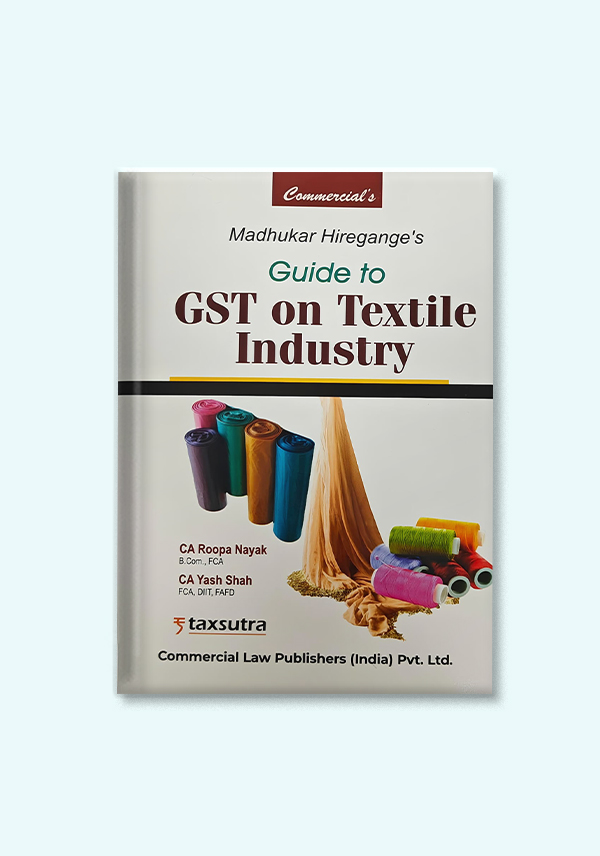
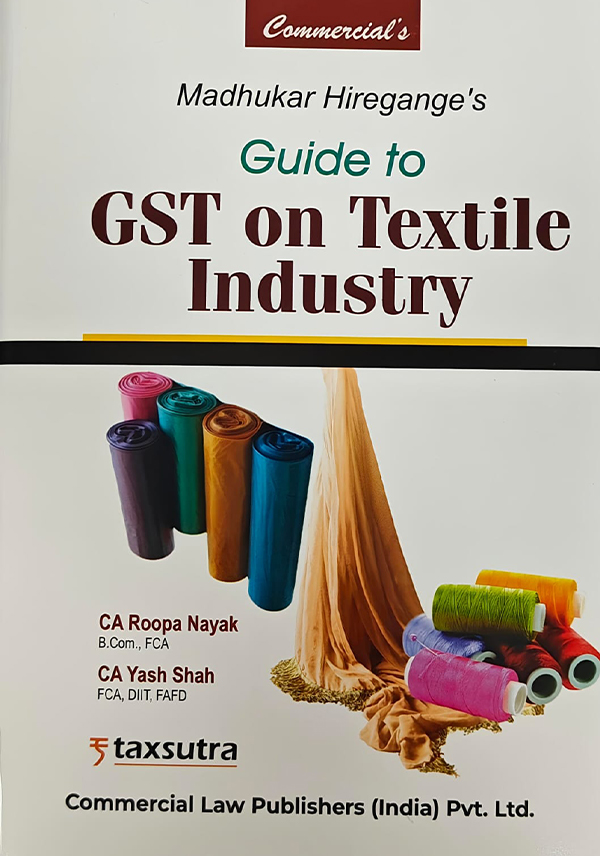
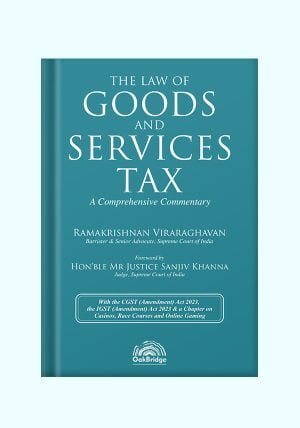
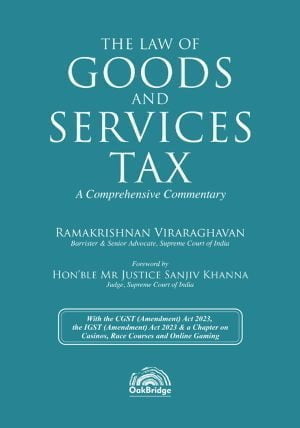
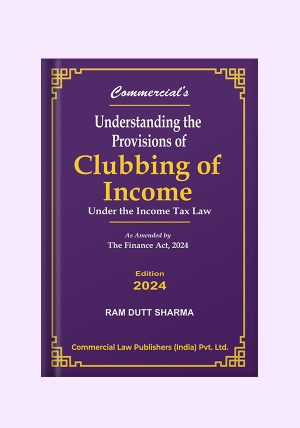
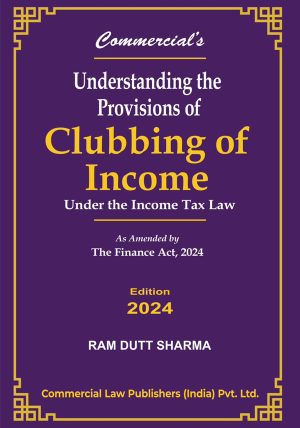

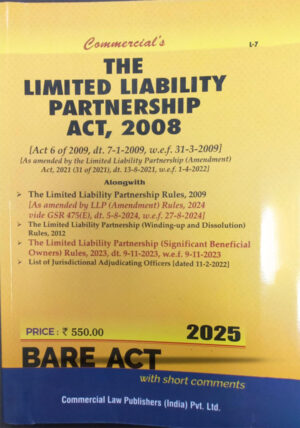
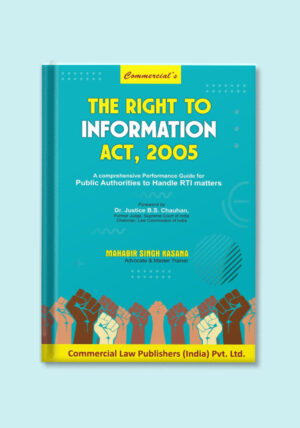
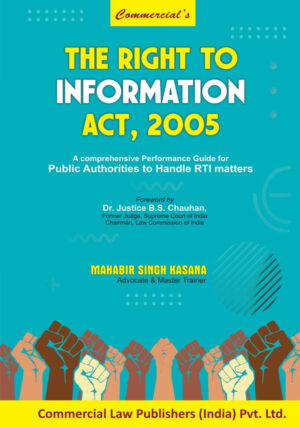




Reviews
There are no reviews yet.